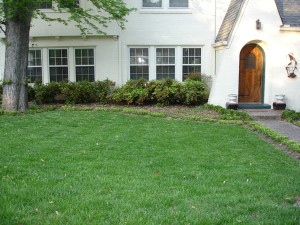Mow it low and go.
Arghhh…how many customers do you have that want you to show up to their property every two weeks, mow their grass as low as your blades will allow, and go away for another two weeks until the grass is, once again, two feet high?
While the money is often good with these types of basic lawn care customers, there is something unfulfilling about performing the lowest form of lawn care services demanded by some customers…mow it low, and go.
It is springtime right now and many of you who are just getting started with your lawn care companies are looking for any customers you can find. I understand that you probably don’t care if you have 100 “mow it low and go” customers…you just want to be mowing grass and making money.
However, as you are acquiring customers this spring, I want to challenge each of you to attract as many customers as you can who want to care for their lawns in a proper, environmentally responsible fashion. We’re not talking about customers who want to apply lots of fertilizers and pesticides and expect a perfectly manicured lawn each week. We are talking about customers who will let you raise your blade to a proper height, practice integrated pest management, install water gardens & natural areas, and build good soil by leaving well-mulched clippings on the lawn.
Attracting a few customers who are keenly interested in having healthy lawns will teach you a tremendous amount about proper lawn care and they will give you tons of ideas and healthy lawn care management practices that you can spread to your other lawn care customers.
The benefits of building beautiful lawns with environmentally correct lawn care techniques are far reaching. Yes, you will be proud of the lawns and landscaping (and make great money from those customers) but also, great lawns generate amazing referrals. And if you acquire the right customers and bid your jobs correctly, you should be able to build a list of top-notch customers who are willing to pay you handsomely to maintain their lawns and landscapes.
Do you want to learn how to operate a successful lawn care and landscaping business? Visit our main webpage to learn more about our “Start A Lawn Care Business” guidebook and software business package. This is a HUGE business toolkit which is perfect for anyone just starting in the business or anyone who is looking to expand a lawn care business.
